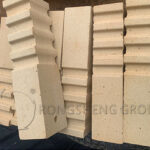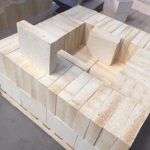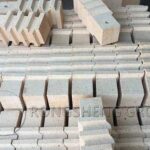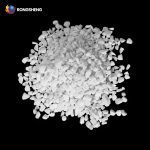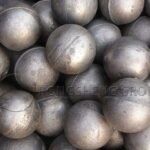A hydrogen sulfide incinerator is a professional incinerator for treating hydrogen sulfide tail gas. The working conditions are very harsh, and the inside of the furnace is filled with acid gas, which can easily cause serious erosion to the furnace lining material. When designing refractory materials for furnace linings, the common factors of high-temperature environments and acid-corrosive media should be fully considered. Therefore, the technical requirements for its lining materials are as follows.
- In actual production projects of hydrogen sulfide incinerators, due to special working conditions such as fluctuations in materials and air volume, the furnace temperature may reach about 1400°C. Therefore, the lining material needs good high-temperature resistance and softening temperature load capacity.
- Since the amount of hydrogen sulfide gas upstream is unstable, every fluctuation in combustion conditions in the furnace is a large thermal shock to the furnace lining. When selecting materials for the fire-facing surface, it is required to have good thermal shock resistance, that is, the seismic performance requirements are relatively high.
- To control the temperature of the equipment shell, the lining material should have stable thermal conductivity when selecting it.
- The diameter of the furnace body is large, the material needs to have good volume stability and creep resistance, and the change rate of the re-burning line is small.
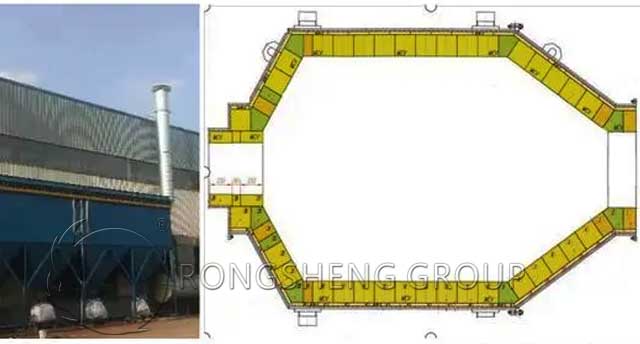
Selection of Refractory Materials for Hydrogen Sulfide Incinerator Lining
The operating temperature of the incinerator is 1150°C, and the instantaneous maximum temperature can reach 1400°C. The main refractory structure of the furnace adopts a three-layer structure.
- ① The fire-facing surface is lined with corundum mullite bricks with good thermal shock performance.
- ② The middle layer of the lining is made of high alumina brick LZ-55.
- ③ The outer protective bricks are made of high-aluminum insulating refractory bricks.
To ensure the temperature of the steel shell, an insulation layer is added to the outer wall of the equipment.
Corundum Mullite Bricks for Hydrogen Sulfide Incinerator Lining
Mullite refractory material is the only stable binary mineral phase in the Al2O3-SiO2 binary system. Corundum-mullite bricks are high-aluminum refractory products composed of mullite as the main crystal phase and a small amount of corundum phase. They have good high-temperature strength, high-temperature creep resistance, thermal shock resistance and corrosion resistance. Corundum-mullite bricks can use mullite granules as aggregate and α-Al2O3 powder as powder. They can also use fused or sintered corundum granules as aggregate and synthetic mullite powder as powder. The aggregates and powders are batched according to a certain proportion and particle size gradation, and the sulfurous acid pulp waste liquid is used as a binding agent. The materials are added in a certain order, fully mixed evenly, and formed using a friction brick press or a hydraulic brick press. After the bricks are dried, the finished product is fired at 1650~1750℃.
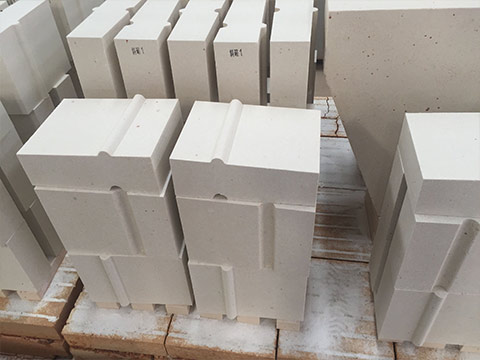
High alumina refractory bricks. High-aluminum refractory brick (LZ-55) is an aluminum silicate refractory material made of high-quality high-aluminum material and clay as a binder. It has high thermal stability and good slag resistance. High alumina refractory bricks are generally formed and calcined from bauxite or other raw materials with high alumina content.
High aluminum thermal insulation and refractory products. High-aluminum insulating refractory products have the characteristics of low volume density, large porosity, low thermal conductivity, and specific heat capacity. In the engineering of high-temperature industrial furnaces, they are mostly used to build the insulation layer (non-working layer) of industrial furnaces. High-aluminum insulating refractory products are formed and calcined from bauxite or other raw materials with high alumina content.
Fiberglass mat. In order to prevent the body from being burned, the thickness of the insulation layer should be calculated according to the surface temperature method, and the temperature of the outer surface of the insulation layer should not be greater than 60°C. The outer wall of the steel shell of the incinerator uses fiberglass felt as the external insulation material. It can not only improve the thermal insulation effect, and increase the temperature of the metal wall, but also play the role of high-temperature protection.
Selecting suitable lining materials, reasonably setting the thickness of each layer of masonry and external insulation, and controlling the shell temperature can effectively improve the corrosion resistance of the incinerator. It can effectively ensure the long-term safe and reliable operation of the incinerator and extend its service life.

Summary of Lining Materials for Incinerators Burning Hydrogen Sulfide
The working temperature in the furnace of an incinerator that burns hydrogen sulfide is around 1150°C, and the working conditions are harsh. It is an acidic combustion atmosphere, but due to fluctuations in materials and air volume during actual production, the furnace temperature will reach 1400°C. The amount of hydrogen sulfide gas is very unstable, and every combustion fluctuation in the furnace causes a large thermal shock to the furnace lining.
It is very important to use refractory materials for this kind of acid gas furnace lining, so acid corrosion resistance and thermal shock stability are very important. The main body of the furnace can adopt a three-layer structure. Corundum mullite bricks should be used for parts that are in direct contact with flames. It is characterized by strong wear resistance and corrosion resistance. Third-grade high-alumina bricks can be used as the middle layer. Because the working layer does not directly contact the flame, the flexibility of the third-grade high alumina brick is relatively good. The outer layer can be used as a thermal insulation layer, and high-aluminum insulating refractory bricks are used to keep the temperature down while reducing the temperature of the outer wall of the steel shell.
Corundum-mullite bricks are refractory products composed of mullite as the main crystal phase and corundum phase. It is formed by high-temperature sintering at 1650~1750℃. It has good high-temperature strength, high-temperature creep resistance, thermal shock resistance, and corrosion resistance. Grade 3 high alumina bricks. It is an aluminum series product made of high-aluminum raw materials and clay as a binding agent and fired at 1400°C. It has high thermal stability and strong flexibility. Lightweight high alumina bricks. It has the characteristics of small volume density, large porosity, low thermal conductivity, and specific heat capacity, and has good thermal insulation performance when used in thermal insulation layers. In the case of slow heat dissipation, it can not only save fuel but also reduce the temperature of the steel shell.
The incinerator that burns hydrogen sulfide is one of the rarer types of furnaces, so the corundum-mullite bricks among the refractory bricks used for the lining are high-grade refractory materials. High alumina bricks are neutral materials, and lightweight high alumina bricks are lined with three layers of masonry, which can effectively improve the corrosion resistance of the incinerator. During construction, refractory mud of the same material is used for masonry to ensure the long-term safe and reliable operation of the incinerator.


